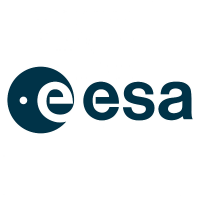ESA Graduate Trainee in Electromagnetic Compatibility Engineering
European Space Agency - ESA
Job Requisition ID: 19347
Date Posted: 1 February 2025
Application Deadline: 28 February 2025 23:59 CET/CEST
Publication: External Only
Type of Contract: ESA Graduate Trainee
Directorate: Technology, Engineering and Quality
Workplace: Noordwijk, NL
Grade Band: F1 - F1
Location
ESTEC, Noordwijk, Netherlands
Our team and mission
The Electromagnetic Compatibility (EMC) and Harness Section supports space projects in all application domains, i.e. science, Earth observation, human space flight and robotics exploration, navigation, telecom and space transportation.
The ability to function correctly in their electromagnetic environment, constituted of intentional and unintentional internal and external sources, is essential for all electrical equipment and systems.
We operate our own anechoic chamber for conducted and radiated EMC testing, complemented by several facilities for DC and AC magnetic tests. We especially support projects on measurements for demanding, non-standard requirements and their verification, pre-compliance measurements and tests on breadboards or development models. Moreover, we perform troubleshooting activities and provide customized tests for specific project needs.
In addition to laboratory testing, we perform analytical and numerical analysis. Various electromagnetic modelling and circuit simulations tools are available to the section and are used to derive requirements, predict performances, analyse test results, etc.
In addition, we are responsible for research and development (R&D) activities on EMC and harness for space applications. Our diverse team consists of 11 dedicated experts in the domains of EMC and harness. The team members are located together in the same office area and exchange frequently informally. We have weekly team meetings with the full section, including EGTs.
You are encouraged to visit the ESA website: http://www.esa.int
Field(s) of activity/research for the traineeship
To guarantee the proper performance of spacecraft and missions, it is essential to ensure electromagnetic compatibility (EMC) to avoid causing interference to on-board communication systems, scientific payload, or critical systems. Electromagnetic interference (EMI) due to radiated emissions belongs to the main interference scenarios. Consequently, prediction and verification of radiated emissions at unit equipment level as well as at spacecraft system level are an essential part of EMC engineering activities.
Electromagnetic simulations can be time-consuming, which limits the number of spacecraft configurations that can be modelled and evaluated in the initial design process or later assessments and mitigation analyses. As the spacecraft body often forms a resonant cavity, especially inside the spacecraft simplified free-space formulas cannot be applied even approximately. Recent advances in test techniques and machine-learning methods for predictive artificial intelligence (AI) have the potential to significantly reduce the time to evaluate a large variety of spacecraft configurations. The overall objective of the activities is to establish a validated library of internal radiated emission scenarios for various spacecraft configurations which could be used in the future to train AI networks.
As an ESA Graduate Trainee, your will have the opportunity to:
1) Define and build a basic set of canonical EMI sources and characterize their radiated emissions by test in our EMC lab, for example in terms of electric field as per state-of-the-art space standard. This includes also the selection of a practical and relevant frequency range.
2) Model the canonical sources inside a full-wave electromagnetic simulation software tool, simulate the resulting radiated emissions, e.g. in terms of electric field, and validate the simulation results with test results from the characterisation measurements outlined in point 1 above.
3) Characterize the total radiated power of the individual canonical sources in one or more reverberation test setups, e.g. mode-stirred reverberation chamber, thermal vacuum chamber (TVAC) with mechanical mode-stirring, or vibrating intrinsic reverberation chamber (VIRC).
4) Simulate radiated emissions inside a spacecraft for a significant set of different spacecraft configurations (100 or more), which can be implemented in a physical spacecraft mock-up. The emissions sources inside the spacecraft model are those defined in point 1 and modelled in point 2 above.
5) Validate the radiated emissions for a sub-set of simulations by electric field measurements inside a physical spacecraft mock-up at a significant number of selected positions. The measurements will be hands-on activities within the state-of-the-art EMC laboratory and with a team of EMC experts at the European Space Agency.
Technical competencies
Knowledge of relevant technical/functional domains
Relevant experience gained during internships, project work and/or extracurricular or other activities
General knowledge of the space sector and relevant activities
Knowledge of ESA and its programmes/projects
Behavioural competencies
Result Orientation
Operational Efficiency
Fostering Cooperation
Relationship Management
Continuous Improvement
Forward Thinking
For more information, please refer to ESA Core Behavioural Competencies guidebook
Education
You should have just completed, or be in the final year of your master’ s degree in Physics or Electrical Engineering with specialization in electromagnetic compatibility (EMC), analogue electronics, high-frequency technology, radio-frequency systems, telecommunication systems, or adjacent areas.
Additional requirements
You should have good interpersonal and communication skills and should be able to work in a multicultural environment, both independently and as part of a team. Previous experience of working in international teams can be considered an asset. Your motivation, overall professional perspective and career goals will also be explored during the later stages of the selection process.
Hands-on experience with testing in the lab and related test equipment will be an asset.
Practical experience with electrical/electronic circuit simulations and/or electromagnetic modelling will be an asset.
Diversity, Equity and Inclusiveness
ESA is an equal opportunity employer, committed to achieving diversity within the workforce and creating an inclusive working environment. We therefore welcome applications from all qualified candidates irrespective of gender, sexual orientation, ethnicity, beliefs, age, disability or other characteristics. Applications from women are encouraged.
At the Agency we value diversity, and we welcome people with disabilities. Whenever possible, we seek to accommodate individuals with disabilities by providing the necessary support at the workplace. The Human Resources Department can also provide assistance during the recruitment process. If you would like to discuss this further, please contact us via email at [email protected].
Important Information and Disclaimer
During the recruitment process, the Agency may request applicants to undergo selection tests. Additionally, successful candidates will need to undergo basic screening before appointment, which will be conducted by an external background screening service, in compliance with the European Space Agency's security procedures.
The information published on ESA’s careers website regarding working conditions is correct at the time of publication. It is not intended to be exhaustive and may not address all questions you would have.
Nationality and Languages
Please note that applications can only be considered from nationals of one of the following States: Austria, Belgium, Czechia, Denmark, Estonia, Finland, France, Germany, Greece, Hungary, Ireland, Italy, Luxembourg, the Netherlands, Norway, Poland, Portugal, Romania, Slovenia, Spain, Sweden, Switzerland, and the United Kingdom. Nationals from Latvia, Lithuania and Slovakia as Associate Member States, or Canada as a Cooperating State, can apply as well as those from Bulgaria, Croatia, Cyprus and Malta as European Cooperating States (ECS).
According to the ESA Convention, the recruitment of staff must take into account an adequate distribution of posts among nationals of the ESA Member States*. When short-listing for an interview, priority will be given to external candidates from under-represented Member States*.
The working languages of the Agency are English and French. A good knowledge of one of these is required. Knowledge of another Member State language would be an asset.
*Member States, Associate Members or Cooperating States.
Who we recruit »
Recruitment Process »
What we offer »
Life at ESA »
FAQ »
Apply now »
Opslaget er indhentet automatisk fra virksomhedens jobsider og vises derfor kun som uddrag. Log ind for at se det fulde opslag eller gå videre til opslaget her:




